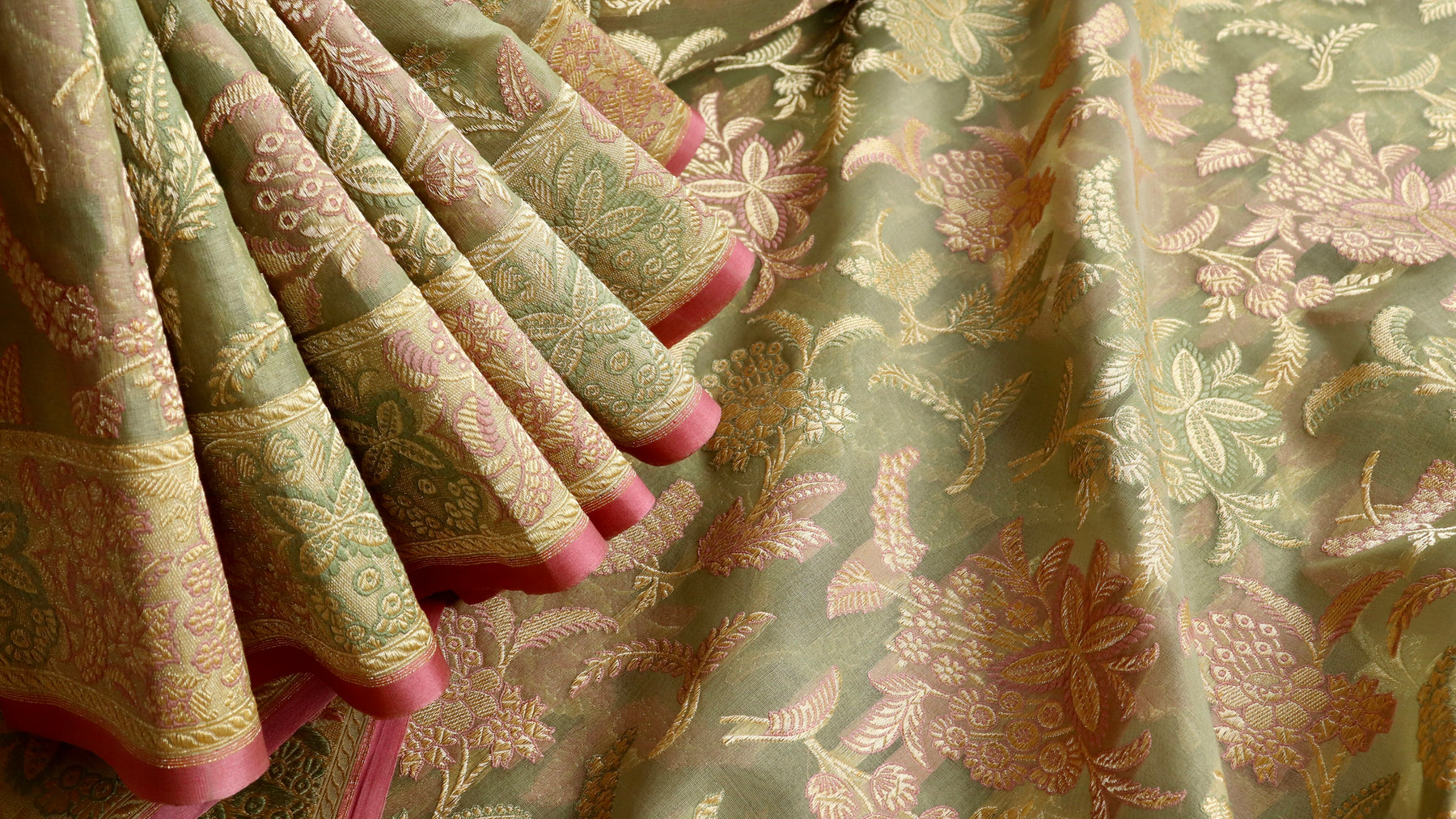
Enchanting Weaves Of Banaras
Banarasi sarees for centuries have been a dream for brides. It is an emotion, art and culture that one holds close to its heart. It is also patience and perseverance of the artisans who weaves it with utmost faith.
Allow us to guide you through the world of warp and weft and educate you with inherited hand weaving skills that are utilised to create your luxury tribute of heritage.
Tanchoi:
A Sensuous play of colourful resham work leaving an exquisite intricately embossed design on silken surface - Tanchoi is a weave of sudden subtle switch of closer hues in the same colour family or complimentary shades, happening on body of a saree. A dense weaving technique that truly reflects creative craftsmanship & richness of Indian Textile.


Kadhua:
kadhua – the king of enchanting, inimitable motifs, enlivening & accentuating its handwoven base. Kadhua motifs adorn the saree like an ornate jewellery in true sense.
The oldest signature banarasi technique of persistence, patience & labour, that allows to create exquisite motifs in different colours & sizes across the body of the saree. Each motif is painstakingly inlaid into the fabric separately leaving no floating threads on the reverse side.


Kadiyal:
A weave deployed to enjoy the innate beauty of contrast hues in a saree. Sharp inlay of striking contrast coloured border is typical identification of exquisite kadiyal weave.
Kadiyal technique gives flexibility to choose a different colour for the border & base of the saree making use of three shuttles. ‘Kadi’ in Hindi refers to ‘Gib’, hence the technique involves interlocking two or three weft yarns in a way that colour band is created.


Ektara:
An enhancement in hand-feel & visual-appeal - The defining aspect of Ektara weave is that it renders a smooth & shiny surface to the saree.

Cutwork:
The cutwork technique involves hand weaving each motif separately but unlike kadhua, the pattern is made to run across the edges making the threads float on reverse, which is cut manually later.



